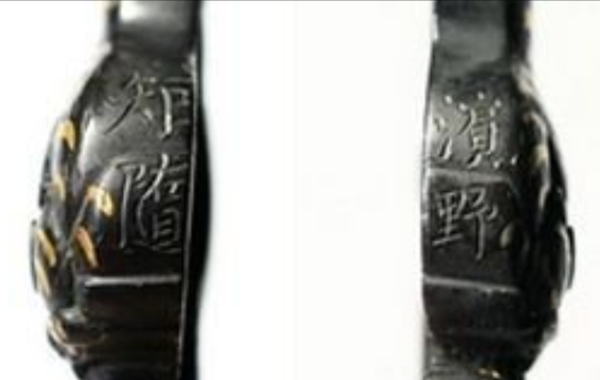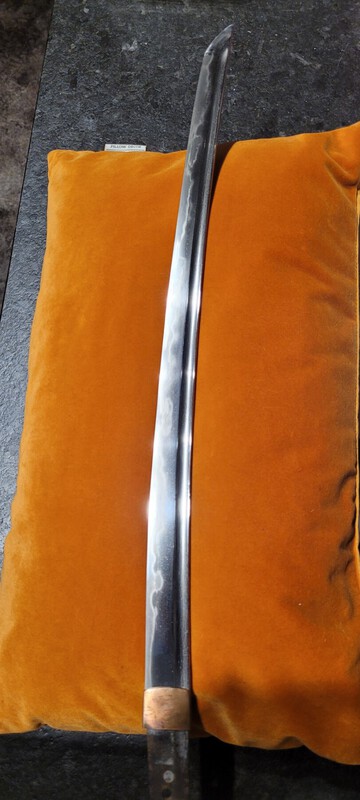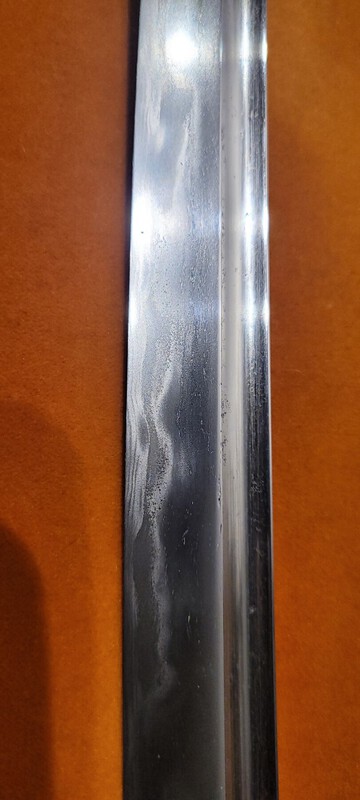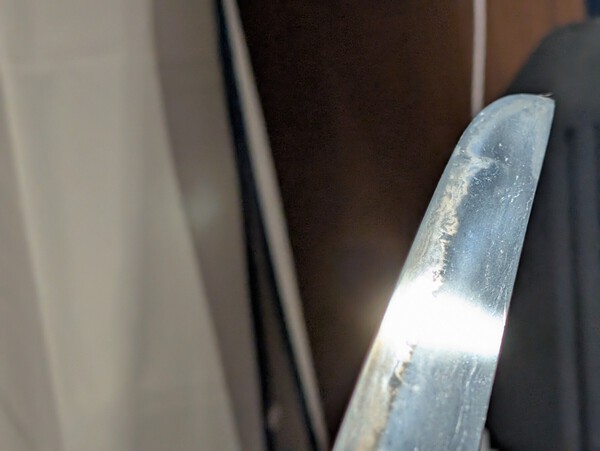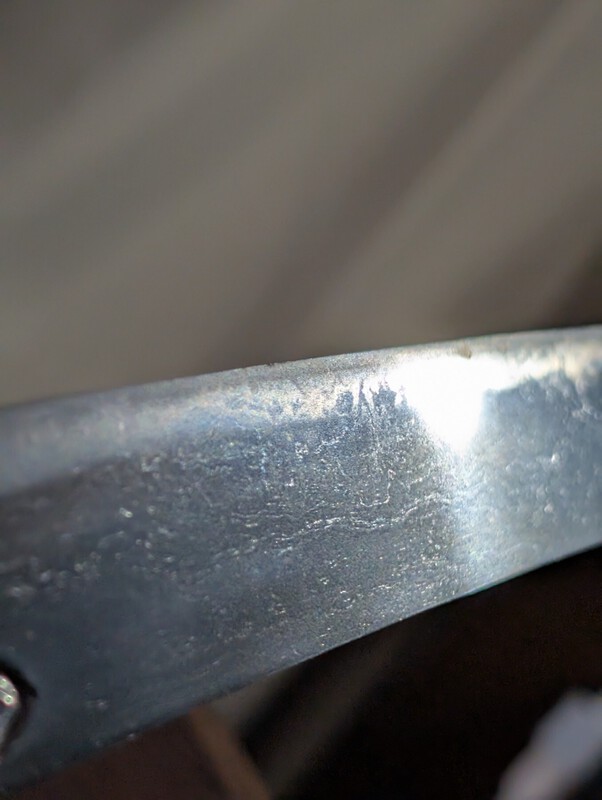Leaderboard
Popular Content
Showing content with the highest reputation since 10/02/2025 in all areas
-
Hello all, I’m pleased to share something that I’ve gave a lot of effort to get. It’s a special order Naokatsu Wakizashi. Although the name is inscribed, I don’t want to give so much information about the person who ordered it as my research is still going on. All fittings are made and signed by 7th gen Goto Seijo, and whole set is original to the blade(possibly sageo as well), bearing the name of the same individual - been preserved in perfect condition for exactly 172 years. I’m not sharing detailed images of the blade yet, as it needs to be photographed in a better setup. And at present, it is not for sale. Hope you enjoy it.26 points
-
With a heavy heart from a recent phone call from Minako Schiller, I wish to report that Guido has taken his leave from this plane of existence! Guido was an early and a long time member of NMB! From his posts, you will recall he was not shy and well... he called a Panzer ... a Panzer! As a career diplomat, he served the German Embassy as an Attache in several Asian countries. He greatly enjoyed his two postings at the embassy in Tokyo. This was certainly his sweet spot because he was very much at home in Japan. In all our years of associating in Japan, I cannot recall a time when we didn't imbibe when meeting. any occasion was an opportunity or an excuse for a Kampai! We had no illusions of grandeur... it was either beer or nihonshu... or beer then nihonshu. We traveled a lot together domestically but only once internationally when we ventured over to Macao! Suspicious minds out there... I know what you are thinking! No, it was not to gamble! We had been invited to attend the gala events for the opening of the History of Steel in Asia Exhibition at the newly opened Macao Art Museum (MAM). Guido, Roger Robertshaw, and I were honored guests for we contributed the entire display of Japanese swords, tsuba, and armor for the three month exhibition. All our items from Japan were shipped through the Embassy diplomatic channel. Edged weapons from seven Asian countries were on display as the Chinese government made their pitch to demonstrate the historical importance of their homeland in the development of edged weapons. Guido was an avid collector! When he was stationed in New York at the United Nations, he collected some fine Civil War firearms including a nice Sharps rifle, a Henry rifle, and several cap and ball revolvers. While in Jakarta, he put together a collection of Kris blades, and in Japan he was in Nihonto heaven and he developed a netsuke collection as well. In mid 2021, during Covid, Guido was recalled to Germany to take his final posting for his remaining two years prior to retirement. To this end, the Ambassador of the Federal Republic of Germany, Her Excellency Ina Lepel sent out a limited number of invitations for the farewell dinner for Mr. and Mrs. Schiller held on May 17 at 7 p.m. at her residence. During this solemn period of emergency pandemic privation, on the day in question, my wife and I made our way to the German Embassy to determine if there really was cause for celebration and if the rumors were true. In fact, Her Excellency Ambassador Ina Lepel, had indeed made great arrangements to send Guido and Minako Schiller back to Germany. It had not been determined if this action resulted from an infraction or if it were a benevolent gesture. It was entirely possible that Attache Schiller had been doing good work and this reassignment was, in fact, a reward. Yet, was it a reward to send a man home to sausage and sauerkraut after years of eating Tokyo’s finest sashimi and raw oysters? Is it even possible to willingly give up the range of heavenly sake found in Japan? What hypnotic spell could shots of Apfelkorn or Rumpel Minze Schnapps have over the infinite variety of locally brewed sake? To this day, these questions remain unanswered… unsolved mysteries and unanswered questions to compete with Guido's speculation on the missing Masamune sword. Like a Teutonic knight, loyal to the order, Herr Schiller was indeed packaged up and moved to his ancestral home. Unfortunately, the final stage of Guido's employment was not completed. He suffered a massive stroke and fell into a coma from which he never recovered. He remained in this state until October 10th, 2025. He is now only with us in our memories of his deeds, a man who served his country well as he rose to officer level in the army and then entered diplomatic service. Of greater importance was his service to his family, to his wife Minako and his daughter Hana. Sadly, Guido never got the opportunity to play with his new granddaughter. Guido is greatly missed... by me... his drinking buddy... I mourn this loss!21 points
-
Thanks for letting us know Bob and sorry for your loss, and the nihonto community’s loss. These last few years I had often thought about Guido, hoping through some miracle he might wake from his coma… not to be. Guido was someone I respected very much, he was highly intelligent, full of knowledge and insight, and willing to share it, he also had a very sharp wit and more often than not our conversations would end in belly-laughing. Many years ago, when I first set out to become a nihonto craftsman, there were very few people willing to help me, most would just dismiss me as a foolish foreigner, but not Guido. He offered to meet up with me in Tokyo, a complete stranger from the other side of the world, to discuss all things nihonto and nihon. Over the years, we corresponded quite a bit, and we would sometimes meet up at nihonto related events, where we could continue our running in-jokes with each other. He was a gentleman and a scholar... with a strong sugata!! May he rest in peace.15 points
-
13 points
-
12 points
-
Hi, I can certainly chime in. Regarding your first question: There are a few chu-saku Muromachi and Edo smiths that have a tiny number of Juyo blade. for example, Kiyonori, Ujishige and so on. Less than ten of them. However, all these blades are in absolute mint condition, signed and ubu and critically, these swords pass during the lax years of the 70's, and today they would be mostly considered "Juyo in name only" (JINO, as Darcy used to say). The only chu-saku smith that passed later than than the troubled "phonebook" sessions is the Edo smith Kunimasa, and even then, no chance in today's extremely difficult and competitive sessions. These blades are difficult to sell in Japan. You see a lot of JINO online catering to the foreigner market. In this day and age, no chance. The question is too general to be answerable. In general: fixation on Fujishiro's ratings is a good starting point but inevitably incomplete, and it also requires the understanding that Saijo saku in Kamakura is not the same as Saijo saku in the Muromachi, as he normalizes his rating according to the median of the period. Also, there are many extremely rare and unrated smiths from the Koto period with masterpieces that have J and TJ blades to their names. Typically, from the Ko-Bizen, Ko-Ichimonji, or Ko-Aoe schools. As mentioned, there are also underrated ratings by Fujishiro (Some Sa students, Some Kamakura and Nambokucho Aoe, and especially glaring ones like Kencho, and most egregious of all, Ichimonji Yoshifusa). On passing Juyo and above. It's important to recognize just how correlated things are and, as a result, how easy it is to get confused: great smiths are more overwhelmingly more likely to produce top quality blades, top quality blades in great state of preservation are more likely to have been in important collections (Daimyo, Imperial...), more likely to come with an origami or Kinzogan by a Ko-Honami, more likely to be Meibutsu, more likely to be highly rated by Fujishiro and Dr. Tokuno, more likely to be featured in exhibitions in Japan, more likely to pass Tokubetsu Juyo, and so on. It's easy in this context to think "oh it's juyo because it has denrai to the Tokugawa" - but, at Juyo, this is mistaking correlation for causation. The seed of everything is the quality of the blade in the artful sense. Appraising quality is no trivial matter and requires ample exposure to masterworks until it clicks. There are many classical traits associated with artfulness that are highly appreciated, and were seldom reproduced after the Golden Age. To name a few, these features include a 'wet' looking jigane (uroi), utsuri in its various expressions, a bright and clear nioiguchi (Akaraku saeru), a deep nioiguchi, a sense of unaffectedness, the variety and quality of nie, control over the expression of the nioiguchi, and so on. How these traits are expressed by the three major traditions vary, but they all have a physical basis, they are not "in the eye of the beholder". And yes, there is a component of taste. However, It is not a mere social construct that swords that possess such attributes are considered the best swords. First, there is a biological basis to this in the human brain: it is these very swords that tend to elicit aesthetic emotions in the broadest set of viewers. When steel appears wet like a deeply frozen pond unveiling hidden layers that the mind cannot quite discern, when nie covers the edge like ethereal snow, and when it all appears inevitable and natural, as if the human hand had played no role into bringing this object into existence - It is such encounters that can have profoundly moving effect on the observer. There is a name for the trigger of this emotional response in classical Japanese aesthetics, it is called Yūgen (幽玄), and differs from the Sublime in that it unfolds progressively rather than all at once. When the sword looks flat, the steel grey, the hamon is empty, and the nioiguchi looks drawn with a crayon, it cannot produce such an emotional response in the viewer. And there is an entire continuum in between. Second, it is widely believed that quality in the artful sense correlates positively into the physical reality in the performance sense, and there are very valid metallurgic and historical reasons to believe in this relationship, but this veers into a different conversation. Now, it is important to understand that Juyo means important, it does not mean masterwork, or that it is one of the best blade by the smith. There can be other reasons why a blade is important - for instance, while it may have no boshi and ample hadatachi in the ji, if it is the only extant work by an obscure Ko-Aoe Smith, and on top of it, it was not featured in the Meikan, then it is important by virtue of its scholarly value. The same reasoning on rarity occurs for mei, a signed sword by Norishige is of superior scholarly value than a signed blade by an Edo period smith. The delta knowledge that the sword brings to scholarship affects its Juyo worthiness above and beyond its artful quality. At the highest level, when deciding between keeping a sword Jubun or making it Kokuho, exceptional provenance is also considered over and above its correlation with quality. All else considered, a masterpiece Sukezane owned by Nobunaga is more likely to be elected to Kokuho compared to one exhibiting the same artful qualities and condition but no provenance. Hope this helps, - Hoshi11 points
-
I have moved this to Community News, because Guido was such an important part of the community. I'm really sorry to hear this Bob. No doubt all of us were expecting it for years now. He has been in a comatose state for so long, and I was told there was no chance of recovery, so for him I think it is probably best. But it's terrible news for all who knew him. Met him in Japan, and he was a real character. What a sense of humour! Guido was known to be blunt and to the point, which was an asset when teaching the finer aspects of collecting. But underneath that, he was a real knowledgeable guy who had a ton of info to share. And he knew how to party! A giant of a man, I'll miss him terribly. Condolences to all who knew him and his family. What a sad loss to us all. RIP Guido.10 points
-
Robert, Thank you for keeping in touch with Guido's family and letting us know. I was so sad to hear that he was stricken with the stroke and hoped he'd somehow pull out of it. For a while I felt that if anyone could, it would be Guido. A couple of other European friends kept me informed of his condition. My thoughts and wishes go out to his family, friends, and colleagues. I think of Guido often and reflect upon our "adventures in drinking" in Tokyo when I visited, our email exchanges, and the times we share here on NMB as moderators for Brian. Gads, how many years ago has it been now? Guido blessed us all with his glib logic, acerbic wit, and diplomatic ability to tell someone to go to hell in such a way as they'd actually look forward to the trip. :-) I will add him to the list of cherished friends that I have been blessed to know, introduced through the joy and enthusiasm of Nihonto. While he has departed our company, there will be hearty laughter echoing from whatever part of the universe Guido wandered off to next. Guido, mein freund... Aufwiedersehen! Gute Reise! Wir sehen uns im nächsten Leben wieder!!9 points
-
9 points
-
@Slaborde Sara, in the NMB Downloads look for the paper Japanese Swordsmiths Gifu 1937. This has a summary of your Okada Kaneyoshi which explains his background and the period and a pic. (Note that there are a number of "Kaneyoshi" but use different kanji). You will also find more info on NMB if you use the Search function (top right). It would be good to see a full pic of your sword to better understand what it is and timeframe. He looks to have been quite productive and also produced blades that were custom mounted. There is some variation in his work that indicates period of work. Here are some examples for study. (1) "Seki jū Okada Kaneyoshi saku" takanoha filing, bohi, no stamp [Slough p.74]. (2) (3) " Seki jū Okada Kaneyoshi" , sujikai filing, no stamp [Sara]. (4) (5) "Noshu Seki ju Okada Kaneyoshi saku kore" takanoha filing,,,nagasa 69.6 cm, sori 1.6 cm, bohi, choji-gunome-midare hamon no stamp [Meirin Sangyo]. (6) (7) (8) "Seki ju Okada Kaneyoshi saku" SEKI stamp, sujikai filing, nagasa 69.6 cm, sori 1.9 cm, gunome-midare hamon, custom "gunto" koshirae [Meirin Sangyo]. (9) "Okada Kaneyoshi saku" nagasa 64.0 cm, sori 1.6 cm, suguha-miadare hamon, shingunto leather saya cover. (10) (11) "Kaneyoshi" takanoha filing, nagasa 61.2 cm, sori 1.2 cm date: Showa 19 (1944). (12) (13) "Noshu Seki ju Okada Kaneyoshi saku kore" takanoha filing, bohi, no stamp, nagasa 66.2 cm, sori 1.6 cm, suguha? hamon, well made blade [nosyudo.jp]. (14) (15) "Noshu Seki ju Okada Kaneyoshi saku kore" takanoha filing, bohi, no stamp, nagasa 67.0 cm, sori 1.4 cm, choji-gunome-midare hamon [Meirin Sangyo]. (16) (17) "Noshu Seki ju Okada Kaneyoshi saku kore" takanoha filing no stamp, nagasa 66.4 cm, sori 1.3 cm, koshirae is custom Type 98 shingunto, hamon irregular gunome-choji [ Kurogane House}. (18) (19) "Seki ju Okada Kaneyoshi saku" takanoha filing, gunome-choji-midare hamon, no stamp [yahoo auctions.co.jp]9 points
-
9 points
-
9 points
-
"Japanese aesthetics though are more tricky to understand and are not just "in the eye of the beholder", which is a silly Western concept" I'm curious about this. Could you elaborate? (Jeff) A question to write a book about, but I will try: Japanese swords were not made in a vacuum. The sense for their appreciation and beauty is embedded in a culture long gone and hard to understand even for (modern) Japanese people. Even more so for us Westerners. Usually we tend to enjoy and acclaim features we can easily recognize and understand within the perimeters of our cultural background. An example for this attitude on a very high level: Etchu NORISHIGE is considered a top-swordsmith within Soshu-style of sword-making for good reasons. Western collectors are crazy about his works, for their contrast in jihada and their obvious hataraki are so spectacular. But old Japanese connaisseurs considered his work clearly inferior to MASAMUNE's and SADAMUNE's. Why? Because of its lack of dignity! "What does that suppose to mean: dignity? In 2025 we are living in a world stripped of pride and dignity! Let's make ourselves shine by all means possible." Well, samurai's aesthetics didn't work that way. My advice: Learn the difference between "aki ni sae" and just brightly shining nioi on a hamon. Furthermore study Japan's history and craftsmanship, especially paintings, sculpture, calligraphy and even everyday objects. It is a long way to go, but it is very helpful to understand appreciation of Nihon-To. reinhard9 points
-
I helped someone local here in SA to move a project Koto katana in out of polish condition, and my part of the deal was I kept the spare tsuba that it had, which didn't belong to that sword. It's an average piece...I would say in the "Nobiue style" although obviously not even close in quality. But nice tortoise geometric design. Don't have the size on hand. Pattern is clearer on one side, the other side looks purposefully obscured a bit with hammer marks. Nice glossy patina. Anyways, just a cute tsuba. Then he offered me 2 tsuba for sale at very modest pricing, so figured I'd pick them up since stuff like this hardly ever comes up for sale in SA. Can anyone assist with the translation on the signed one? Very lightly signed, nice little tsuba...I like it. 70mm x 73mm, edges taper slightly to about 3mm from about 4mm. The other I like a lot too. Seems to have a kinpun? mei. Brushes, a leaf and not sure what the other oval emblem is. Can't tell if that is a Tadahisa or..? 75mm Round, about 5mm thick. Just sharing in case anyone has any info on them. Yes...I played with the colours a little but to show the features. All have a decent deep patina with very little wear.8 points
-
In regards of the upcoming Dai Tōken Ichi (DTI), I was asked by a few readers if I can do another 50% off eBook sale, which I happily comply with ☺️ https://markussesko.com/2025/10/21/dti-ebook-super-sale-2/8 points
-
慶應四年七月日 = on a day in the seventh month of of Keiō 4 (1868 CE) 水府 稲延徳正作 = Suifu Inanobe Norimasa saku8 points
-
This above is a good point for people to always bear in mind; first and foremost the workmanship and traits should underpin our understanding, followed by the (secondary) view of the signature. In the last 20-30 years, long since the great Koza publication was written, scholarship has moved a bit in relation to the multi-generational theory and lately single-generation interpretations often prevail where previously there was a strict separation about some smiths (often the case in Bizen Osafune for example). Various examples include Mitsutada, Nagamitsu but also Kunimune etc. Moving on to how many zaimei Shintogo tachi exist. With regard to the zaimei Shintogo Kunimitsu tachi…well, there are more than one. Of course they are a great rarity but I think I have records of 5-6 such zaimei tachi. And it is very possible that Jussi might have unearthed more with his visits to shrines and temples and perusal of old records. I attach some of the examples I have records of. Of these, on a couple of occasions, I have been privileged to hold and study the last blade (TokuJu, one ana). It is an extremely fine blade, with sophisticated and fine jiba and in no way inferior to his tanto ( I have studied some in hand and various behind glass). So, I am not sure to which [inferior ibid.] tachi the Koza refers in the excerpt above.8 points
-
8 points
-
Many knew Guido for his acerbic wit, potent intellectual bon mot and direct, trenchant delivery. He was a man of many talents as we can see from the photos above. I would like to share a different, lyrical side to the man, larger than life. He did say he would chase any of us using his special service contacts if any of this ever surfaced but I think this is an important tribute to the great Guido. Well, I have cut the two songs he performed to a short illustrative snippet as Brian will probably not like 300MB of the entire performance on his server. IMG_3212.mov8 points
-
In order to give you a visual idea what separates a masterpiece from the better-than-average work, I'd like to show you a comparison. One blade is a masterpiece by Osafune Mitsutada made around middle of Kamakura-period. It airs a supreme yet relaxed mastery of forging and tempering in all aspects; dignity as well, if you want. The other blade is a work of Edo Ishido Tsunemitsu from Kambun-era. It is a very well made blade with brightly shining nioi-guchi, utsuri and all traits of a good choji-midare hamon. (The images were made by master-polisher Fujishiro Okisato and show the real nioi-guchi without hadori-finish) One blade I call a masterpiece; the other a very well made blade. Hope this is is helpful. reinhard8 points
-
7 points
-
(Owner’s address and name) 和歌山縣伊都郡河根村大字河根 – Wakayama-ken, Ito-gun, Kane-mura, O’aza Kane 亀澗光治 – Kametani Koji/Mitsuji/Mitsuharu 三品義明 – Mishina Yoshiaki - One of WWII smiths in Seki7 points
-
7 points
-
7 points
-
Dear Mason. Personally I would go for umegane on this one. There seems to have been a rather unfortunate longitudinal delamination which someone has thought to obscure, not quite achieving a match for the original metal. The rather sharp edges and regular shape along with traces of the delamination at both ends lead me to this conclusion. All the best.7 points
-
.."I felt a sense of shock from which I never recovered..." Exactly—this is what I hoped to touch upon earlier. Call it bottom-up processing, a first-order experience, epiphany, shock, ... or use Scotus's definition (props to Mushin—cut to the bone ); it is a visceral experience that happens to you, a unique connection between the object and the observer, the gaze outward becomes a gaze inward ("du gleichst dem Geist den du begreifst"). If this can be learned, it likely comes closest to the concept of "Ishin-denshin", where the teacher acts more as a catalyst for the student, setting their process of self-understanding into motion (or elevating it to a new level). (Perhaps this was the role Darcy played for some forum members; at least, I got the impression that he was a good soul.) Then, it seems to me that there is at least a second, very interesting central path of top-down processing: the study of primary and secondary literature, the field of quote assemblage, hearsay, and the translators and autistic data collectors and data enthusiasts (I have the utmost respect for them). But also, and most importantly, the realm of fiction, self-worth, and the social sphere—in short, chaos. The social sphere, in my view, distinguishes the question of aesthetics (i.e., mastery) from questions about for example the essence of time or love. Aesthetics can, and often does, quickly become a socially constructed product. It can be easily manipulated and stretched. In this regard, the social dimension in the question of what is considered beautiful seems particularly relevant in a collectivist country like Japan. I would also place the following contribution here: ..."Paul relates that Albert Yamanaka held the opinion: Noda Hankei's arrogance was responsible for the blunt gracelessness of his shapes." Objective influences fade into the background, and the value of a work / a blacksmith becomes closely linked to the behavior of the social actors of the time— as well as the market, critics, curators, collectors, dealers, ... The exchange relationships between these actors play a decisive role, as they create an informal socialization around rules, trends, and the language of the market. Such network effects, especially in Japan, play a crucial role in the development of a smith’s reputation and how it is perceived in the market, an aspect I’ve so far given too little attention to, but I hope to engage in more exchange about. Specific signals, like positive evaluations by experts (the Honami family and their repeated crises of trust), protégés, peers, provenance, and familial relationships, imply a higher value. Must a sword be of higher quality just because it was owned by a famous Daimyo? The status of a smith or an artwork is negotiated through such exchange processes. This means that if a blacksmith had a great need for recognition, the ability to stage himself and his skills, and gain the support of wealthy patrons, he would enter the annals of history. But the opportunities for a blacksmith to rise, cannot be seen as entirely equal or chance-driven. In my opinion, it is 100% likely that there were blacksmiths who were nonconformists, obsessed with pioneering spirit, ahead of their time, uncompromisingly realizing their own visions and abilities, but who fell out for example of favor with wealthy contemporaries, faded into obscurity, and whose works did not gain recognition because they lacked the positive influences of provenance or similar factors. The influence of actors within the social system is determined by their status, which is, in turn, affected by their interactions with associated actors. Status, thus, becomes a self-reinforcing process. For many collectors and art buyers, interacting with the social system serves primarily to elevate their own status (how much status matters and self-worth is also frequently observed in our forum when the discussion quickly leaves the subject matter and becomes emotional). Many interesting perspectives have been outlined so far, and I look forward to learning more. I’m eager to understand more about the technical intricacies. What are the key points in Paul R. Allman’s work?7 points
-
An important and exceedingly rare Japanese efu tachi made by Imperial Household Artisan Kanenori to commemorate the Ascension to the Throne of Emperor Taisho. This sword is dated August, 1912. Emperior Meiji passed away on July 29, 1912. Yoshihito, his son, ascended to the throne in August 1912. Emperor Yoshihito was later awarded the name Emperor Taisho, 123rd Emperor of Japan. Efu Coronation court tachi were made in very limited numbers–often just 12 were made. Another such example was returned by Russian President Vladimir Putin to Japan in 2016. It was presented to Japanese Prime Minister Shinzo Abe. That sword was made for the ascension to the throne of Emperor Hirohito (Showa). A quick google search will bring up an article about that sword. This sword is signed ‘Teishitsugigeiin Sugawara Kanenori’ (Imperial Court/Household Artisan). The reverse is dated ‘An auspicious day in August, First Year of Taisho Era’ (1912). The nakago is also marked ’83 Okinasaku’–which refers to Kanenori’s age of 83 at the time he made this sword. The koshirae is adorned with the Go-shichi no Kiri (5-7-5) Paulownia crest. The blade nagasa is 63.8 cm. This fine Coronation tachi comes with shirasaya as well. Each piece (tachi and shirasaya) comes in a silk sword bag. CONDITION: This important and exceedingly rare Coronation tachi is in quite perfect condition. This sword was well cared for. SOLD --Matthew Brice StCroixBlades.com7 points
-
Type : Katana in Shirasaya Ubu Mei : Bishu Osafune Kiyomitsu Saku Dated Eisho 10 ( 1514 ) Papered : NBTHK Hozon Ngasa: 69.7cm (-尺三寸) Sori 2.4cm Moto-Haba 3.3cm Saki-Haba 2.0cm MotoKasane 0.56cm Shinogi-Thikess 0.75cm Saki-Kasane 0.55cm Kissaki-Chou 3.1cm Nakago-Chou 17.0cm Weight 702g Hamon: Suguha Jihada : Itame, mokume Sword Location : USA Payment Methods Accepted : venmo, Paypal Price and Currency : $4800.00 USD Accepting offers as well Free shipping for USA . Will ship overseas if possible A beautiful Sue Bizen katana by Kiyomitsu in new polish by Woody Hall. Kiyomitsu blades dating to the Eisho era are very rare as there was only one Kiyomitsu recorded in that era. Please see the photo from Sesko s record. The original dealer posting and description can be found here: https://eirakudo.shop/018294 Please let me know anytime if more you wish to have additional photos of any part of the blade Thank you -Kevin6 points
-
Hey Tosogu fans, I'm doing my usual thing and creating this thread to share my latest acquisition with the forum. I recently picked up this pair of tiger menuki on Jauce signed Hamano Noriyuki! The menuki are uncertified however they seem to match the Hamano school stylistically. A fine detail that caught my attention and convinced me to bid for these was the different purities of gold used in the stripes of the tigers distinguishing them from each other. Here is an enlarged photo of the signature from the original auction listing, followed by a photo of my own taken from my phone camera. Apologies for the less than stellar quality!6 points
-
I have found this chart somewhat helpful and thought I would share for those who have not seen it. The chart lists the kanji in the first row, the sosho script in red in the second row, and the hiragana on which the sosho is based in the third row. Memorizing the hiragana table, in theory, should make deciphering the sosho script easier. John C.6 points
-
Forgive the long silence. So much water has flowed under the bridges and through the fords since July. Just to record two recent finds at antiques fairs in Kyoto, each serendipitous in its own way. The first is a bronze portable candle holder. It could well be Meiji, thus strictly speaking outside the remit of this thread, but I saw it in the distance, that unmistakable shape! I have one at home, but I had until then never seen another! They do say these things are better in pairs, so quick as a wink, I snapped it up. Back at home I compared them; there are small differences, but they were surely made by the same hand, and essentially they look really good sitting on either side of my armour display! Two peas in a pod. Photos may follow... The second is a burning-match holder. Now these are as rare as hen's teeth. I've always wanted one, and for twenty-plus years I have looked but never seen an example outside a museum collection, except for one fake. Then last Saturday, there it was, on a table, and the whole world dropped away. The dealer was surprised that I even knew what it was, and he called some people over, as if to witness a miracle. One of these was an armour repairer who used to work for Daishiba San in Kyoto, and he asked me if I knew Uwe Sacklowski!!! A bolt from the blue. I was so glad I had made the effort to tag along with the offspring last weekend. On Saturday I have been asked to give a 60-minute speech in Japanese to a citizens' group at the city library. They wanted the outline by today, :eek: ...so after months of nervous worry, I have just sent off two pages of summary. I hate being pinned down like this. Anyway I am hoping they will allow me to ramble stupidly in broken Japanese about Nihonto, Koshirae, Tosogu, Katchu, Hinawaju, Netsuke, Bizen-yaki, etc., then to set a puzzle for them, and finally to express how kind the people of the Bizen region are. They have also asked me to bring along some objects for display, so I am preparing an Edo period map, some books, and random armour parts, guns, netsuke, tsuba, etc. Wish me luck, please, teaching my grandmother to suck eggs!6 points
-
@Slaborde Sara below is an edited version of your summary hopefully suited to your family history. I cannot offer further to what has been provided. SWORDSMITH KANEYOSHI His swordsmith “art” name is 兼義 Kaneyoshi. His family name is 岡田 Okada and his given name is 武 Takeshi. He was born in the town of Seki in Gifu Prefecture in Meiji 42 (1909) on October 30. From when he was young, around age 14 in 1923 (Taisho 12) he began training in the making of agricultural tools under his uncle who was a qualified blacksmith toolmaker. They likely experimented with making swords at that time, as they made edged farm tools. He later went to Oshu (now called Fukushima Prefecture) in northern Honshu, to train further as a blacksmith, after which he returned to Seki to train as a swordsmith in traditional methods in the tanrenjo forge. He looks to have completed his apprenticeship in 1933 and was then making swords. A 1937 official survey notes he had trained under Niwa Kanematsu Kanenobu (兼信 丹羽 兼松) who was born in 1874 and worked in Kamo-gun in Gifu Prefecture. Kanenobu was an experienced swordsmith who died in 1941 age 67. From around 1935 he took on his older brother 兼定 Kanesada (岡田 定男 Okada Sadao) as a deshi (apprenice); he was born in 1905. The 1937 report notes that at that time Kaneyoshi had his own forge at Otsu in Seki but then did not have an apprentice. In 1939 (Showa 14) on October 20 Kaneyoshi registered as a swordsmith in Seki City and at that time had moved to Yoshida-cho in Seki. He then focused on training new tosho (swordsmiths). Noted students of his were: Okada Kanesada (brother), Ikeda Kanetsuna, Takai Sadatsugu and Isaji Kanehiro. Kaneyoshi became a promoter of traditional sword-making by koshiki tantren (the old style of forging, emphasizing traditional methods and materials). He was then working in the Seki Token Kaisha (company) and was head of the tanren-bu forging section. Later he became a full time employee of Noshu Nipponto Tanrenjo Kabushi Kaisha (share holders). In 1942 he was recorded to be living at Seki-machi, Ikuta-cho. He was well trained in traditional methods and considered to be a well above average swordsmith. During the war he largely produced well made “showa-to” non-traditional blades as required but also some custom traditional Nihonto. As with many swordsmiths he entered Sword Exhibitions, which were judged competitions in which swordsmiths were ranked. 1939: At the 4th Shinsakuto Exhibition his first submission won Kinpai (Gold Medal) 1941: At the 6th Shinsakuto Exhibition there were 250 blades evaluated. He was ranked 4th level of 5 (Chu Jo Saku) (superior medium level) 1942: Tosho Banzuke (national ranking of 400 swordsmiths) 5th level of 7 (Chu Saku) (medium level) 1943: At the 1st Rikugun Gunto Tenran Kai Exhibition run by the Army; 300 blades were submitted. He won Chairman’s Award (Kaicho-sho). Post-war swordmaking was permitted from 1954 and Kaneyoshi registered as a swordsmith on October 12, 1971 at age 62. However, he died on March 15, 1972 only five months later. Based on material in “Nihonto Message Board” and “Japanese Swordsmiths in Gifu 1937, Malcolm Cox, 2021”.6 points
-
Gents Dore and Reese an auction house in the uk has an auction of swords and fittings on the 15th of November there are over 100 pieces for sale. Even if you are not in the market to buy anything you could do worse than spend a pleasant hour looking at the items for sale. This link will take you to the auction the swords and fittings start at lot 701 https://auctions.doreandrees.com/catalogue/81A7582615F99A2E3774098876CAACFC/AD74375B82A358E6EEF0CE537DEF266D/fine-Japanese-art-including-the-eva-aubrey-sweet-collect/ Regards Mike6 points
-
Thanks to everyone who contributed in here. As a final update, after carefully considering everything said here, I have put in an order for a different blade that I have been eyeing for a while. A Gorozaemon-no-jo Kiyomitsu masterpiece, fully signed, dated (1537) and ubu, with all the workmanship and style I was looking for. @Scogg and @Hoshi special thanks for your posts.6 points
-
Hi John, Suifu (水府) is the name of a village in Hitachi province. The formatting of this mei is slightly unusual, with the two characters of Suifu being arranged horizontally (and read right-to-left) at the top, and one would ordinarily also expect them to be followed by "住", but I guess the smith took some artistic licence here.6 points
-
京城府中區本町 – Keijo-fu Chuku Honmachi 四丁目一六番地 – 4-chome, 16-banchi 堀内吾郎 所有 – Horiuchi Goro, shoyu Ref. Keijō - Wikipedia6 points
-
It is the sword that obtains the Juyo, not the smith. Some average blacksmiths have sometimes created high level swords6 points
-
Don't. Give up on papering. It is over. Seriously. No, -really-, don't second guess this. DOA. So many headwinds for USA collectors, unless the Supreme Court actually rules against the current Tariff regime. I sent stuff before the Tariff shenanigans began. At present, it looks like I actually have to go to Japan to retrieve them.6 points
-
Our dear friend Krystian posted the tsuba on Facebook. It's exactly my taste. Teruaki/Hideaki with Kao. Just a side note. My resemblance to living persons is purely coincidental. I would never claim that the pig resembles anyone.6 points
-
6 points
-
So I got a package a while ago from my dear friend Kazuhiro Hayashi, who as many of you know had recently passed. In the package, a bare blade, no fittings. . He did this from time to time, sending me unusual pieces that he thought I would be Interested in. I like the odd sort of things. Its a Wakizashi with just shy of a 22 inch Nagasa and a deep bohi running the lengh of the blade into the nakago. The sori is about 1/3 inch measured from the Mune machi. It has a very very slight bend but I think that could be sorted by someone who knows how. The polish is not great, but some of the details are visible. Of note, the Hamon is all over the place, which is why I think he sent it to me to begin with. No clear pattern. There is a lot of activity. Big Nie crystals. Lots of sunegashi all up and down the blade. I cant really see much of the hada. It is signed. KUNIHIRO. old style kanji. The nakago does still have some yasuri mei, and there are 3 mekugi ana. one was plugged, one towards the bottom looks recent, and the main looks to be hand punched. I'll post up some pictures and we can all have a discussion about it and what I should do with it next. I'm considering full restoration considering the personal meaning it has.6 points
-
The topic of how to photograph Nihonto appears here regularly Here you will find a few posts on the subject of how to photograph Nihonto All you need: macro lens with manual focus at least an APS-C sensor in the body (FF is ideal) tripod remote shutter release for the camera several light sources ... and above all a lot of patience I am attaching a few photos of kissaki6 points
-
6 points
-
It's a noble cause Erik and one I approve of. Very few people take the time to optimise the photography of nihonto, which is a shame as there is so much beauty that is lost to the casual observer. I get as much pleasure from taking photographic images of my blades as I do studying their history. Darcy and Pablo are the two pioneers who really sparked my desire to improve my own skills. I'm by no means a photographer and had limited equipment when I started last year. My camera is an aging Fujifilm XT2 with the kit zoom lens. I quickly realised to capture all the fine detail a sword has to offer, a macro lens was essential. I bought a cheap, used Laowa 65mm F2.8 from Ebay Kleinanzeigen. The lens is manual only but I think the way manual focus works on the XT2 there is no problem getting pin sharp photos in combination with the Laowa. Next most important consideration were the light sources and I think it's true to say there is no universal light that will highlight every feature in the hada, hamon and boshi. After a few experiments the primary light sources I use now are an Ikea Jansjö LED lamp, which was recommended on a forum dedicated to macro photography. These are unfortunately discontinued but you can easily find them listed on Kleinanzeigen and I bought four for 5 euro each. To see the hataraki in the hamon, I discovered a high intensity halogen light with a dimmer to control output produced the best results (I think this is what Pablo Kuntz's photographer uses). Finally a tripod is critical when implementing longer exposures and I use the Fujifilm iPhone App to control the shutter release so there is zero risk of unintended movement. Here are some images I took from my first session. These are all jpg's without post-processing. You'll find more in the Google Drive folder. Still room for improvement, not least wiping the blade to eliminate all the dust particles . Ikea Jansjö LED lamp/Macro lens/tripod https://drive.google.com/file/d/1hcfbKl8l-efqxqyAxZ4Oe_PdNVX_jwDN/view?usp=sharing https://drive.google.com/file/d/1crDNe1w38OAxs56JgM0YfQpHB6nDpDWd/view?usp=sharing https://drive.google.com/file/d/15k7eGF_EwuC_oCAi-dd5qTee_p5E5PgY/view?usp=sharing 250W High Intensity halogen bulb/macro lens/tripod https://drive.google.com/file/d/1Ri4luL4j5Lslik8-sYD63RvJ-mJj9jlX/view?usp=sharing iPhone 12/natural diffuse daylight/handheld blade and phone https://drive.google.com/file/d/1ppwmEYqNJq_mI8zImLY5FQg2Vkbu6M-1/view?usp=sharing Good luck6 points
-
6 points
-
6 points
-
6 points
-
Hi Erik, Congratulations on your first purchase. It appears to be a nice, honest first sword. What I can say is that the shape appears sturdy, typical of the Momoyama period where the model that the smiths of the period aimed for were the (now) O-suriage Nambokucho pieces, by the likes of Kanemitsu, Chogi, Shizu, and others. Beyond that, we can't see any details on the blade itself to really comment. The fittings are better than the usual cobbled up koshirae. It's a nice matching theme, executed in iron. I hope it will ignite the passion and serve as a portal into this mysterious world. I remember my first sword. Like yours, it was no masterwork, to say the least - but it made me deeply curious about the field, and it brought me a lot of joy at the time. I wish you much enjoyment, Hoshi6 points
-
6 points
-
Steven, I’m sure you’ve been told this a million times before, but there is a Military Swords of Japan section on this forum. So why do you keep posting here? I’m tired of seeing your posts in ALL CAPS! You are buying and selling swords(for years...)...Instead of constantly depending on others with zero contribution to this forum, why not try learning on your own first and come to your own conclusions?6 points
This leaderboard is set to Johannesburg/GMT+02:00

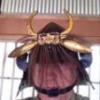


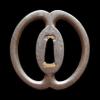
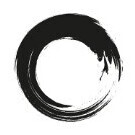


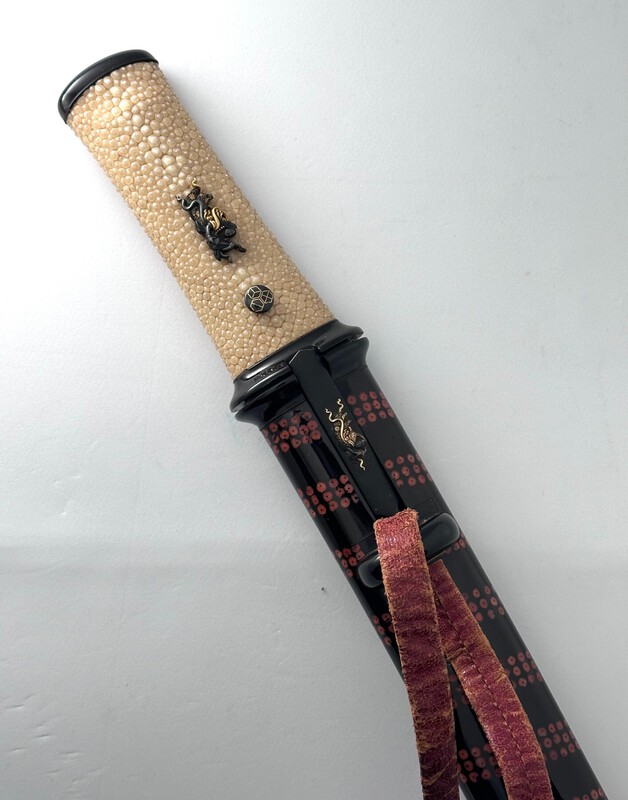
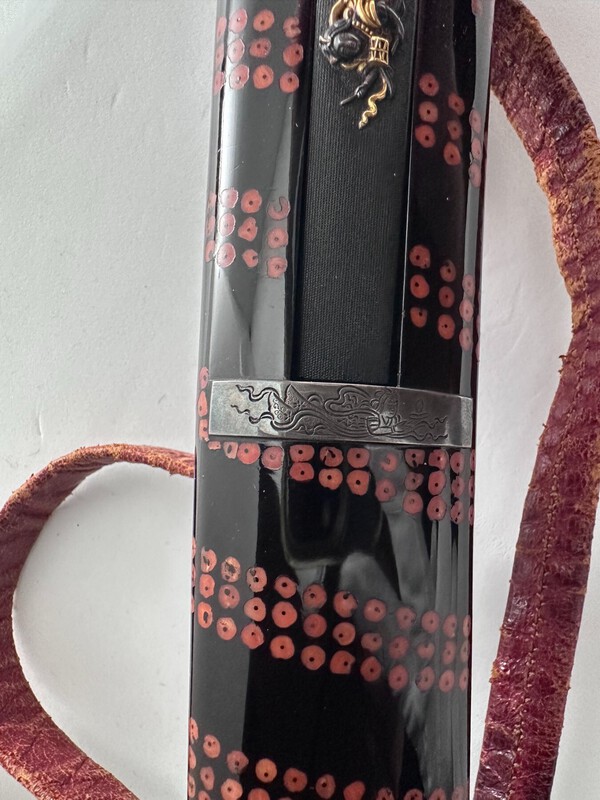
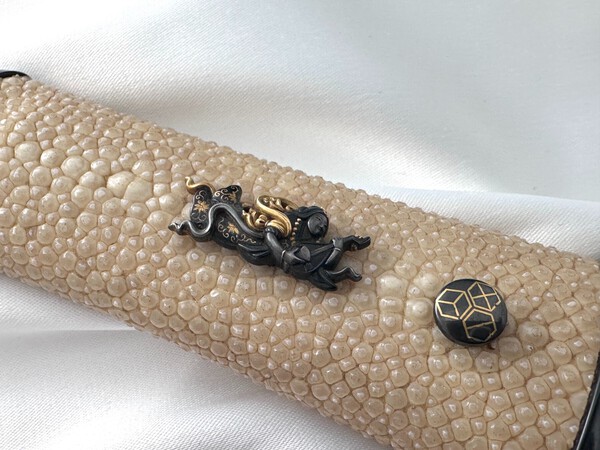
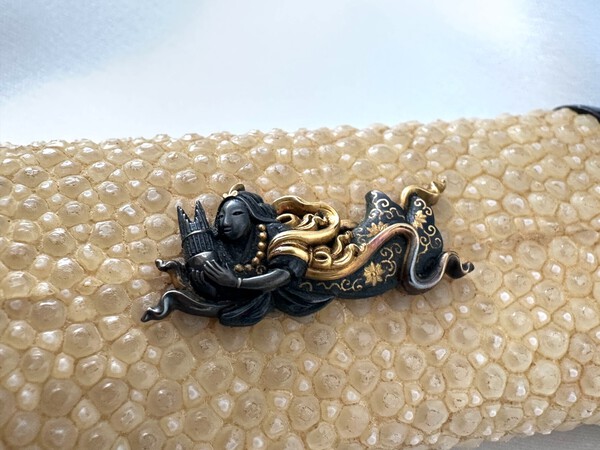


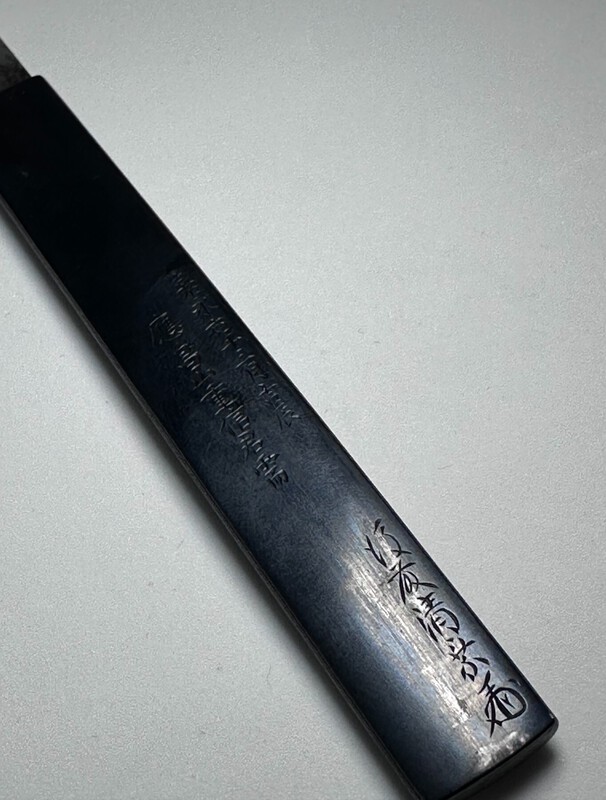
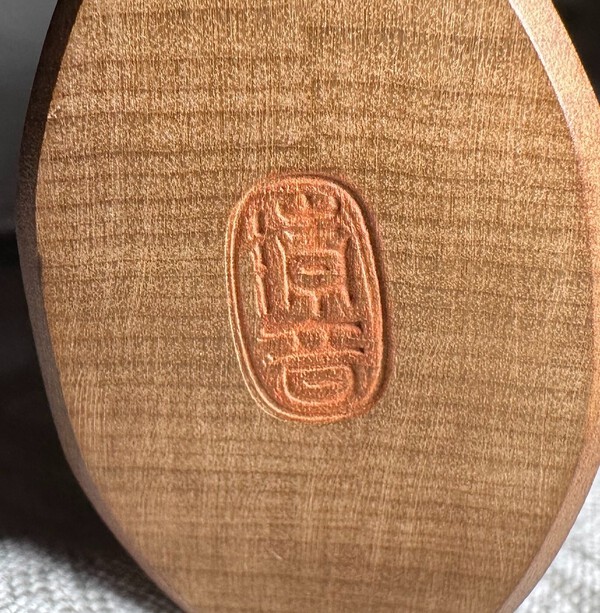






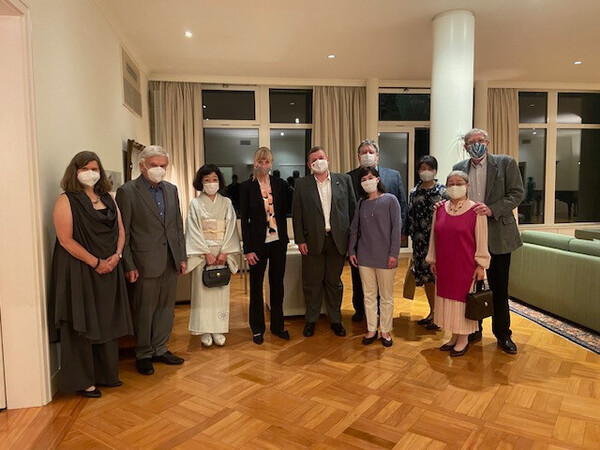


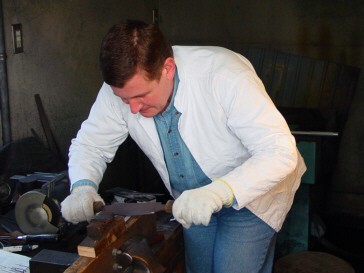





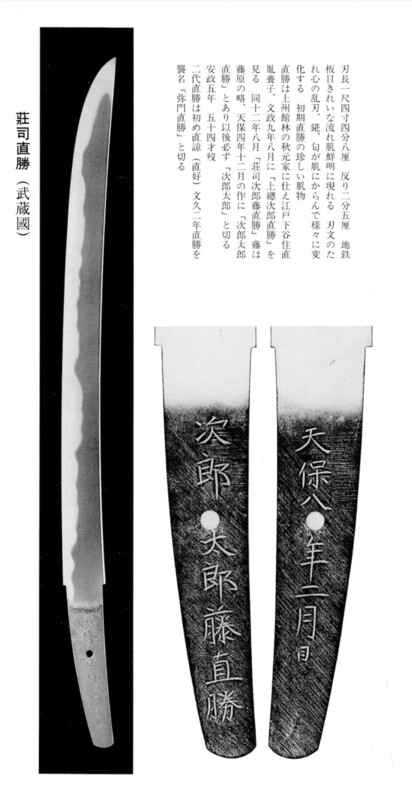



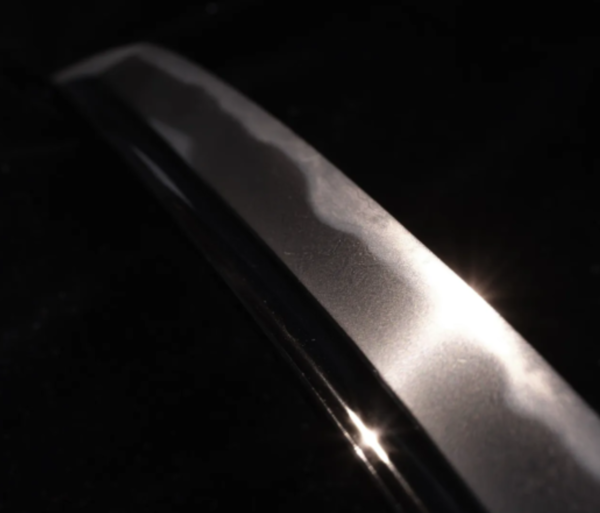

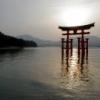
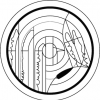








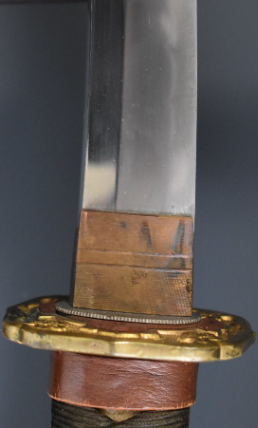









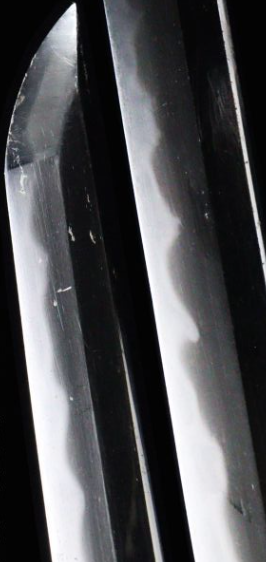
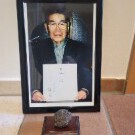


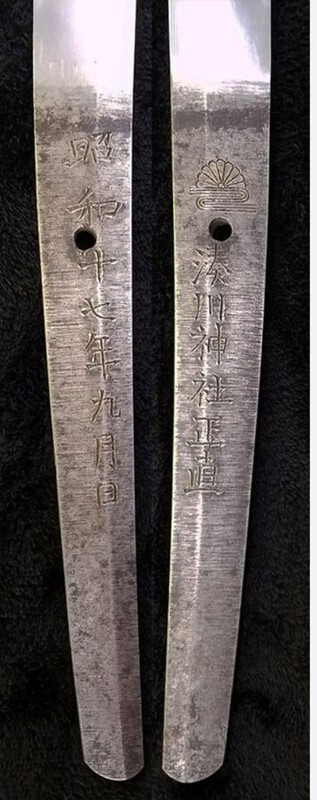

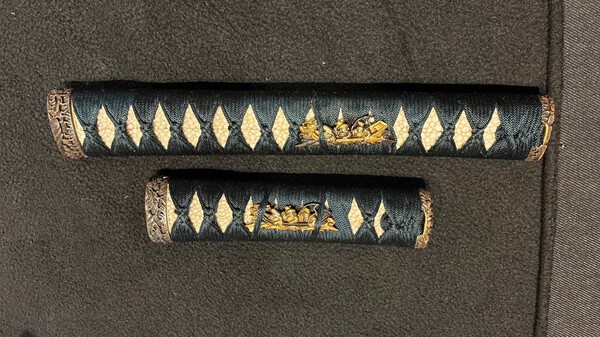
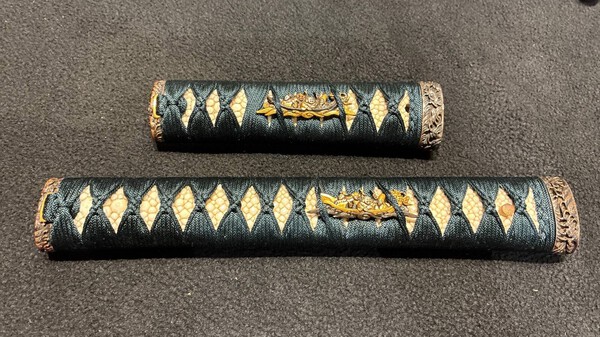
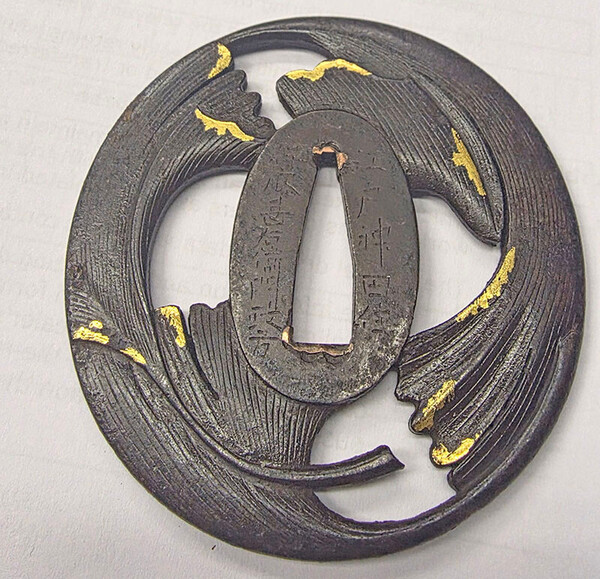

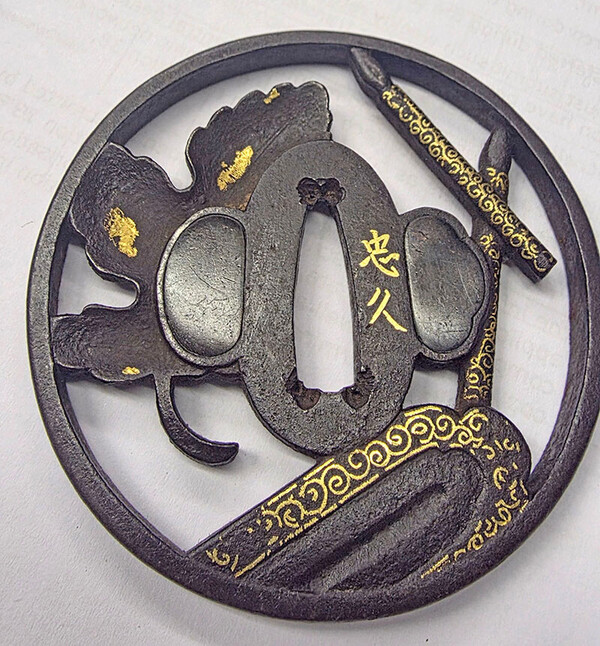


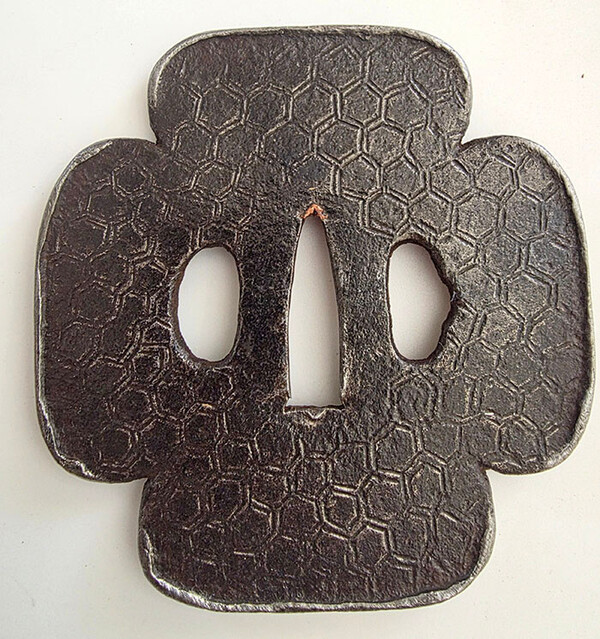

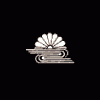
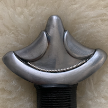
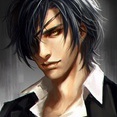









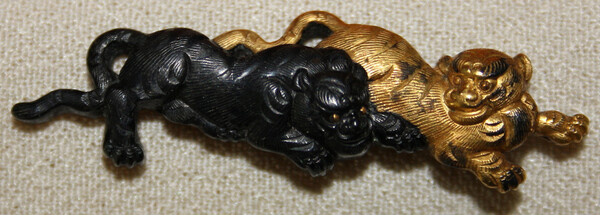






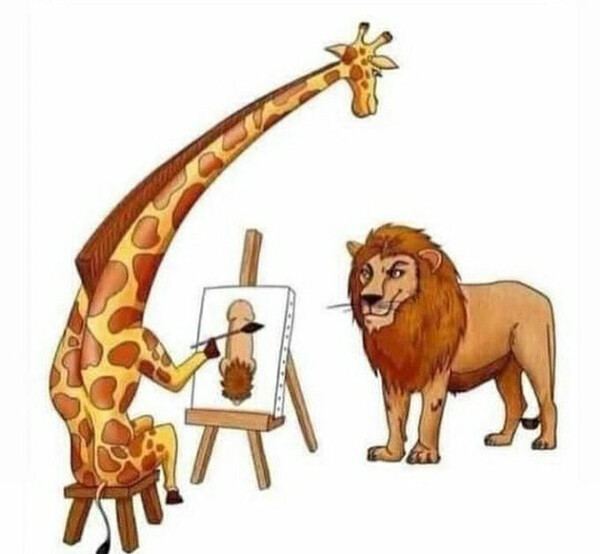
















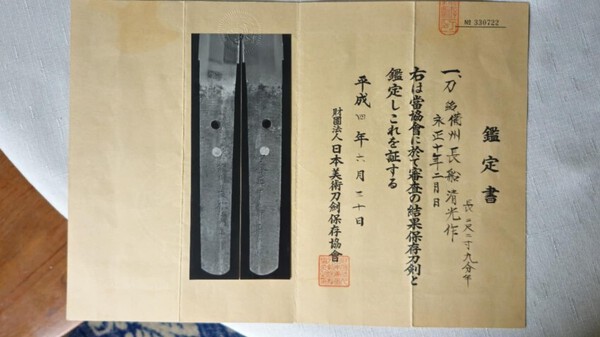
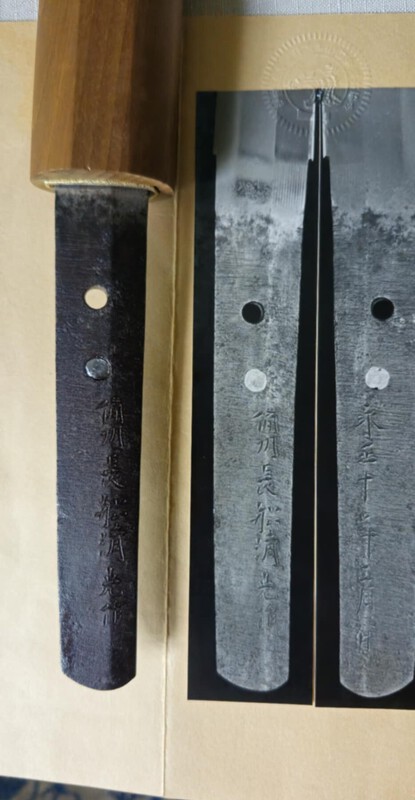
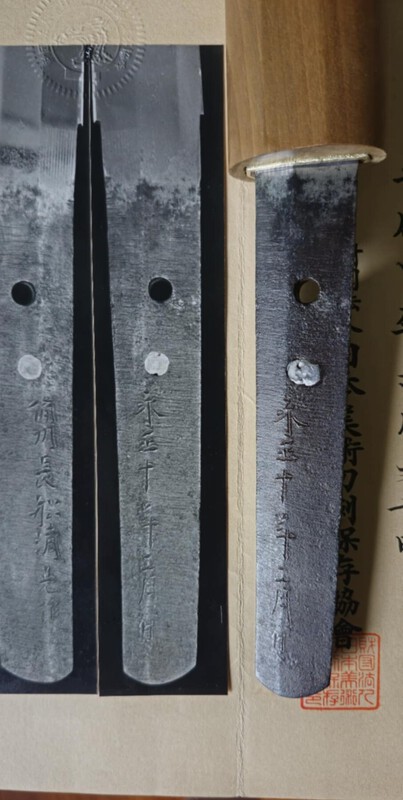

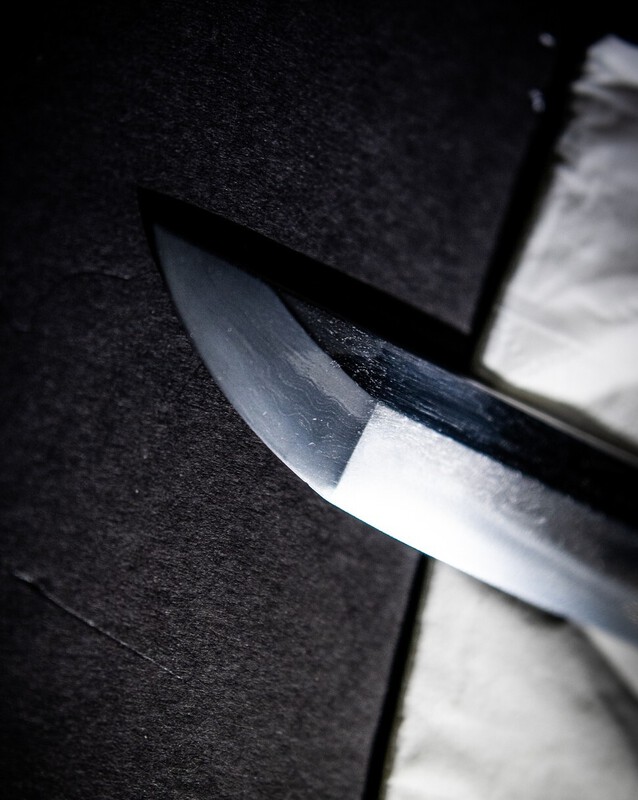

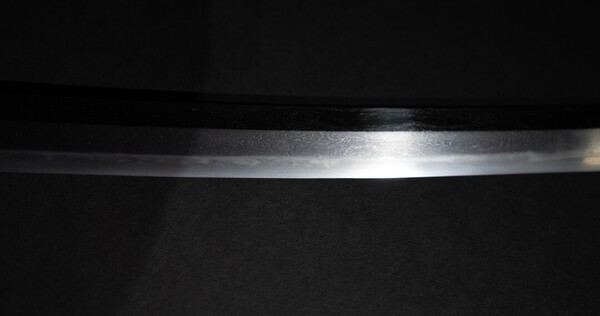

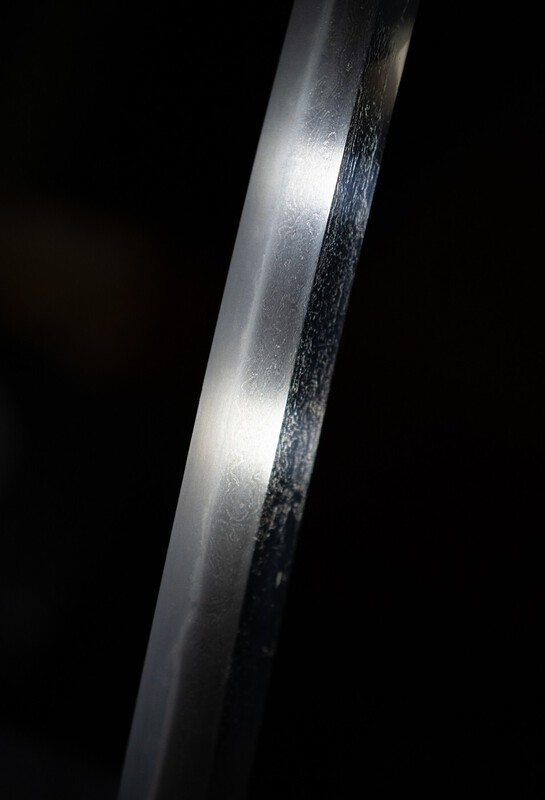
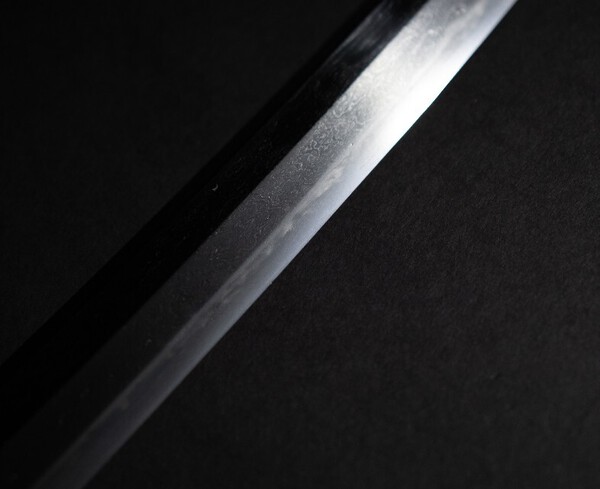
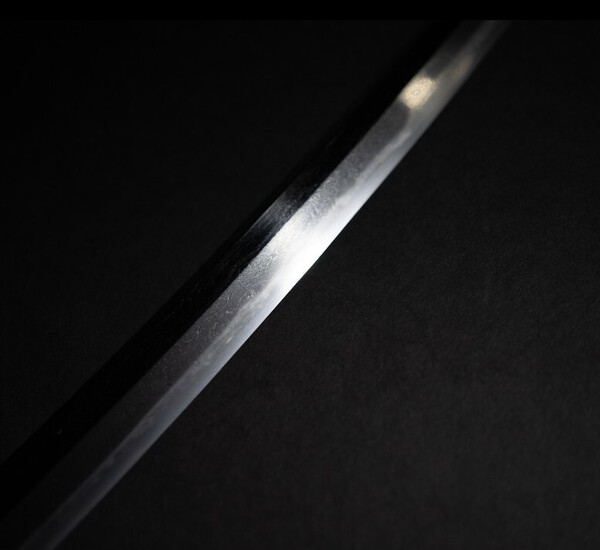
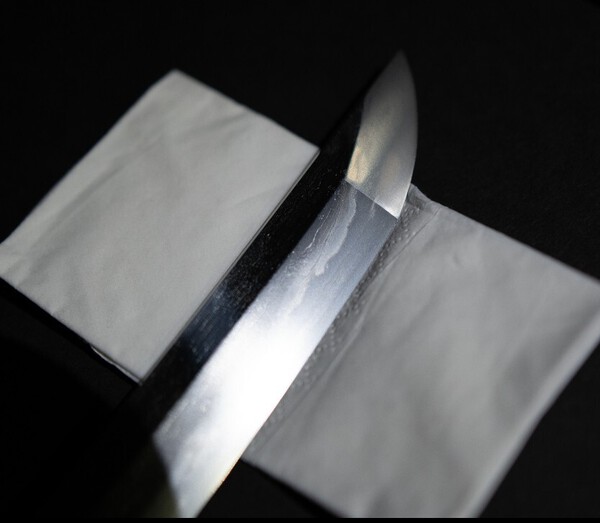

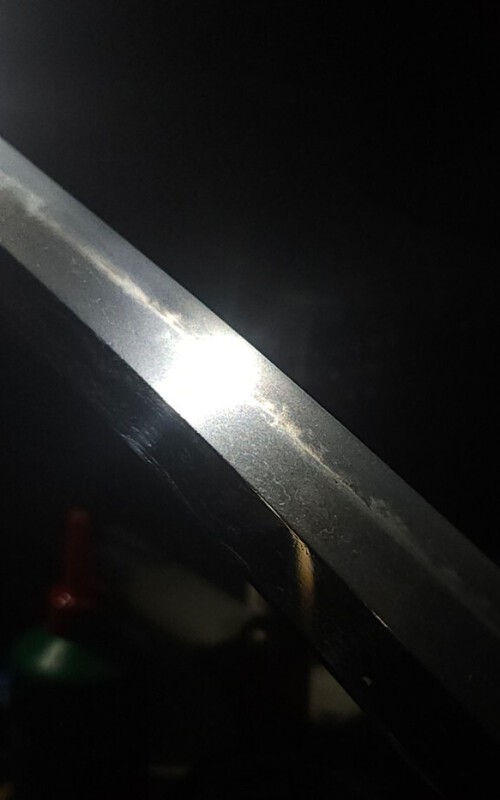





.thumb.png.4c5df79fec171b2dc4a23af38e280a4d.png)
